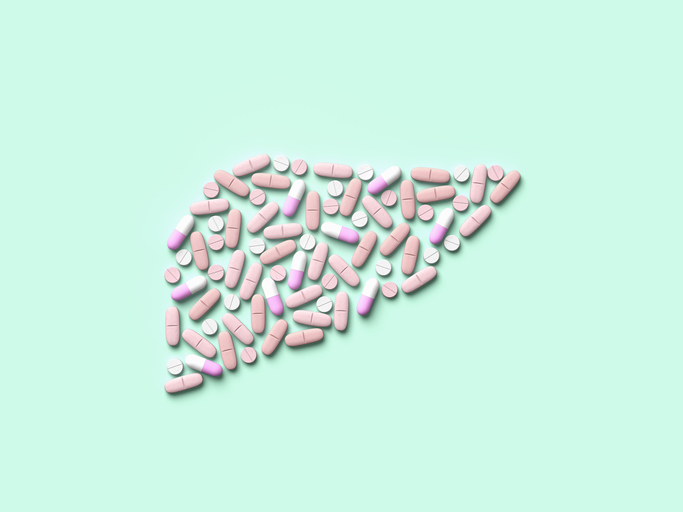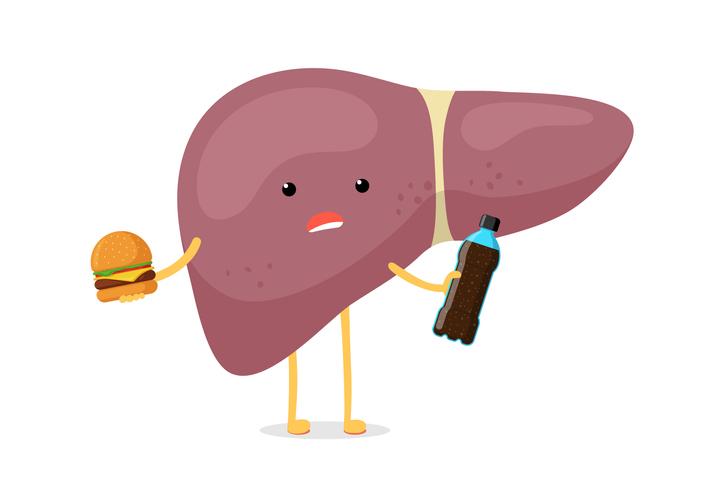The Power of B Vitamins When It Comes to Non-Alcoholic Fatty Liver Disease

By Joy Stephenson-Laws, JD, Founder
I don’t think people really think about the effects of excessive fat build-up around the body’s organs. For one, we can’t see it like we may be able to see our bulging stomach. Secondly, we may not feel the impact of the stress that too much fat can put on the internal organs until serious disease develops. This is why, in my opinion, fat can be a silent killer.
A good example of this is non-alcoholic fatty liver disease (NAFLD). It is perfectly normal and healthy for the liver to have some amount of fat, but if more than 5-10 percent of the liver’s weight is fat then this is considered to be a fatty liver.
As the name implies, NAFLD has nothing to do with alcohol consumption. Drinking alcohol excessively may cause a fatty liver as well, but NAFLD is usually the result of being overweight or obese and/or having type 2 diabetes and/or metabolic syndrome. I do want to make it very clear that although being overweight or obese is a major risk factor, it is possible for thin people to be metabolically unhealthy and have NAFLD. (This is why I always stress focusing on body composition).
There is another stage of fatty liver disease, even more serious than NAFLD, called nonalcoholic steatohepatitis (NASH). If the liver has excessive fat but no damage, this is generally referred to as NAFLD. If the liver has excessive fat and signs of inflammation and liver cell damage, this is considered nonalcoholic steatohepatitis. NASH may progress to cirrhosis which means the liver is scarred and permanently damaged. Cirrhosis is one of the biggest risk factors for primary liver cancer. Fatty liver disease is also one of the leading causes of liver transplants worldwide.
According to the American Liver Foundation:
- About 100 million individuals in the United States are estimated to have Nonalcoholic Fatty Liver Disease.
- Nonalcoholic Fatty Liver Disease (NAFLD), is the most common form of liver disease in children and has more than doubled over the past 20 years.

“NAFLD affects up to 25% of people worldwide. Most people won’t have symptoms, and some may never know they have the condition. But 2% to 5% of people will experience complications from the fat in their liver,” according to the Cleveland Clinic.
The good news is that diet, which is a factor we have a lot of control over, can help. More specifically, certain vitamins may be able to help significantly even if advanced liver disease has been established.
A recent study conducted by scientists in Singapore found evidence which showed that vitamin B12 and folic acid (vitamin B9) supplements could reverse a mechanism within the body that they discovered could lead to an advanced form of fatty liver disease.
“Currently, there are no pharmacological treatments for NASH because scientists don't understand the mechanics of the disease,” according to this Medical Xpress report that discusses the study.
NASH is connected to having a high blood level of an amino acid called homocysteine (it is a chemical the body uses to make proteins).
“They also found that, as homocysteine levels increased in the liver, the amino acid attached to various liver proteins, changing their structure and impeding their functioning,” reports Medical Xpress.
More specifically, homocysteine blocked a specific protein (called syntaxin 17) from “performing its role of transporting and digesting fat (known as autophagy, an essential cellular process by which cells remove malformed proteins or damaged organelles) in fatty acid metabolism, mitochondrial turnover, and inflammation prevention. This induced the development and progression of fatty liver disease to NASH.”
That is a big deal, but what is even a bigger deal is that the scientists found that supplementing with vitamin B12 and folic acid increased levels of syntaxin 17 and helped this amino acid perform its job of autophagy. This supplementation also appeared to slow down the progression of NASH and even reversed liver inflammation and fibrosis.
This is exciting, because there is currently no cure for such advanced liver disease. I am not saying that this is a cure-all, but it is nice to see that there may be another viable approach instead of a liver transplant.
As always, prevention is better than cure.If you have a fatty liver, there is a lot you can do before it progresses to NASH.
A general rule of thumb is to avoid a sedentary lifestyle and maintain a healthy weight (more importantly, I think, a healthy body composition). For more tips on how to help prevent NAFLD and keep your liver healthy, check out these pH Labs blogs.
I do not recommend going to your local health store and purchasing and taking vitamin B12 and folic acid supplements without the advice of a competent healthcare professional (especially if you already have a fatty liver or any other conditions such as heart disease, diabetes and hypertension). When done improperly, supplementation can be very damaging. Check out this recent pH Labs blog.
Finally, to learn more about the important role of B vitamins in general, read here.
Enjoy your healthy life!
The pH professional health care team includes recognized experts from a variety of health care and related disciplines, including physicians, attorneys, nutritionists, nurses and certified fitness instructors. This team also includes the members of the pH Medical Advisory Board, which constantly monitors all pH programs, products and services. To learn more about the pH Medical Advisory Board, click here.







